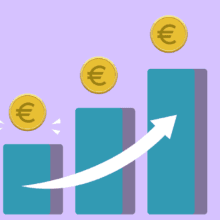Remarketing vs Retargeting: Understanding the Distinctions in Ad Strategies
Navigating through various advertising strategies can sometimes feel like deciphering an ancient code. Among these strategies, two terms often surface, wrapped in a bit of mystery: remarketing and retargeting. But what exactly sets them apart? “Remarketing vs Retargeting: What’s the Difference?”

This question isn’t just a matter of semantics – it’s about understanding two powerful tools that, while similar, target your audience in subtly different ways. Each strategy has its unique approach and benefits, aiming to reconnect with users at different stages of the customer journey.
Whether you’re a seasoned marketer or a curious newcomer, unravelling the distinctions between remarketing and retargeting can illuminate paths to more effective and personalized advertising campaigns. Let’s embark on this journey together, shedding light on these strategies to not only define them but to discover how they can transform your digital advertising efforts.
Understanding Remarketing
Remarketing is like a gentle nudge to someone who walked away from your store window, reminding them of what caught their eye. It’s a strategy used by marketers to re-engage individuals who have previously interacted with a website or mobile app but didn’t make a purchase or complete a desired action. It’s the art of rekindling that initial interest, turning fleeting interactions into concrete engagements.
How Remarketing Works: A Step-by-Step Process
- Visitor Engagement: It all starts when a visitor lands on your website and browses through, triggering the first step without even knowing it.
- Cookie Placement: As they navigate, a cookie is placed on their device, anonymously marking their visit without personal identification.
- Audience Segmentation: This cookie data allows marketers to segment visitors based on their behaviour, such as viewed products or pages visited.
- Targeted Ads Creation: Based on this segmentation, personalized ads are crafted, aimed at re-engaging these visitors.
- Ads Distribution: These ads are then displayed to the past visitors as they browse other websites or social media, reminding them of what they left behind.
- Re-engagement and Conversion: The goal is to entice these visitors to return to the original site and complete the action they initially hesitated on, whether it’s making a purchase, signing up for a newsletter, or any other conversion goal.
Key Objectives of Remarketing
Remarketing isn’t just about bombarding former visitors with ads, it’s a strategic effort to achieve several objectives:
- Increase Brand Recall: Keeping the brand top of mind for individuals who showed initial interest.
- Boost Conversion Rates: Encouraging those on the fence to make a decision, increasing overall conversion rates.
- Personalize User Experience: Tailoring the advertising content based on the user’s previous interactions for a more personalized experience.
- Maximize Return on Investment (ROI): By targeting individuals who are already familiar with your brand, remarketing often leads to higher ROI compared to targeting new users.
Types of Remarketing Strategies
Remarketing can take various forms, each with its unique approach:
- Standard Remarketing: Displaying ads to past visitors as they browse sites and use apps in a network.
- Dynamic Remarketing: Showing ads that contain products or services that visitors viewed on your website.
- Email Remarketing: Sending emails to users who have completed a specific action on your site, reminding them to continue where they left off.
- Video Remarketing: Targeting users who have interacted with your videos or YouTube channel.
Examples of Remarketing in Action
Imagine someone visiting an online bookstore but leaving without making a purchase. Later, as they browse the web, they see an ad for the very book they were considering, along with a special discount code.
This targeted reminder might be just what they need to return and complete the purchase. Or consider a user who abandoned a travel site’s booking form. They might see personalized ads showcasing the destination they were interested in, possibly with an enticing deal.
These real-life scenarios demonstrate how remarketing works to recapture lost opportunities and transform them into successful conversions.
Understanding Retargeting
If remarketing is the gentle nudge to revisit a forgotten desire, retargeting is the beacon that guides lost visitors back to your digital doorstep. Retargeting specifically refers to the online advertising strategy aimed at targeting users who have previously visited your website or interacted with your brand but left without making a purchase or completing a desired action.
It’s a focused attempt to re-capture those almost-customers with targeted ads, making it a crucial tactic in the digital marketer’s arsenal.
The Technical Process Behind Retargeting: Cookies, Pixels, and Lists
Retargeting operates on a foundation of digital breadcrumbs left by visitors, primarily through cookies and pixels:
Cookies are small data files stored on the user’s device when they visit a website, logging their visit and actions.
Pixels are tiny, invisible pieces of code placed on a website or within an email, which trigger a cookie when the page is loaded or the email is opened.
This process creates a list of users who have interacted with the brand in some way, enabling marketers to serve targeted ads specifically to this audience as they navigate other parts of the web or use social media platforms.
Main Goals of Retargeting
Retargeting aims to:
- Increase Conversion Rates: By reminding users of their previous interest, retargeting can significantly increase the likelihood of conversion.
- Enhance Brand Recognition: Frequent exposure to the brand keeps it top of mind, reinforcing brand awareness and affinity.
- Improve ROI: Targeting individuals who have already shown interest in your product or service tends to result in a higher return on investment compared to general advertising campaigns.
Different Retargeting Approaches
There are several approaches to retargeting, each leveraging different platforms and methods to reach potential customers:
- Display Ads: These ads appear on websites visited by the user, tailored to their interests and previous interactions with your brand.
- Social Media Ads: Platforms like Facebook and Instagram offer sophisticated retargeting options, enabling ads to appear in the feeds of users who visited your website.
- Search Retargeting: Targets users based on their search behaviour, showing ads for your products or services if they search for related terms.
Example Demonstrating Retargeting
One notable example of retargeting in action involves a major online retailer. A customer browsed several pages of running shoes but left the site without purchasing. Over the next few days, the customer began seeing ads for the specific shoes they viewed, not just on other shopping sites but also on social media and various blogs they visited. This constant, subtle reminder led to the customer returning to the retailer’s site and completing the purchase.
This example illustrates the power of retargeting in turning potential interest into actual sales, showcasing its effectiveness in reconnecting with users and encouraging them to take the desired action.
Differences Between Remarketing and Retargeting
The digital marketing landscape is teeming with strategies designed to capture attention and convert interest into action. Amidst this bustling terrain, two tactics often get intertwined in conversation: remarketing and retargeting. While they share similarities and are sometimes used interchangeably, understanding their nuances is crucial for leveraging each effectively.
Clarifying Common Misconceptions
A common misconception is that remarketing and retargeting are identical. The confusion is understandable, given their shared goal of re-engaging past visitors. However, this conflation overlooks the distinct approaches and mechanisms that define each strategy. Unravelling the “Remarketing vs Retargeting” conundrum begins with recognizing that each plays a unique role in the marketing funnel.
Key Differences in Goals, Tactics, and Implementation
Goals: Remarketing primarily focuses on re-engaging users who have already shown interest by visiting a website, and using email campaigns to prompt a return or conversion. Retargeting, on the other hand, aims to serve ads across various digital platforms to users who have interacted with a brand, with the intent of drawing them back.
Tactics: Remarketing utilizes email communications as a direct line to potential customers, capitalizing on previous interactions. Retargeting leverages cookies and pixels to track users across the web, displaying relevant ads on other sites and social media platforms they visit.
Implementation: The technical foundation of remarketing often relies on a user’s action—like subscribing to a newsletter or adding items to a shopping cart—to trigger follow-up emails. Retargeting, however, is more about the silent tracking of online behavior, using that data to create a personalized ad experience across different channels.
When to Use Remarketing vs. When to Use Retargeting
Choosing between remarketing and retargeting depends on your specific marketing objectives and the customer journey stage you’re addressing:
Use remarketing when you want to deepen relationships with users who have already engaged in more direct ways, such as signing up for a webinar or downloading a whitepaper. It’s about nurturing existing connections through personalized email content.
Opt for retargeting when trying to recapture the attention of visitors who left your website without engaging deeply. It’s ideal for increasing brand awareness and pushing towards the first conversion or sale.
Comparative Analysis of Effectiveness for Different Business Types
E-commerce: Retargeting shines in e-commerce, where displaying ads for viewed products can significantly boost conversion rates by keeping items top of mind.
Service Industries: Remarketing is particularly effective for services, where decision cycles are longer, and personalized email campaigns can provide the additional information or reassurance needed to convert interest into bookings or contracts.
B2B: In the B2B sector, a combination of both strategies may be most effective. Retargeting can increase brand awareness and keep a solution top of mind while remarketing can nurture leads that require more time and information before committing.
Understanding the distinctions between remarketing and retargeting allows marketers to tailor their strategies to the audience and objectives at hand. While both aim to re-engage and convert, their specific applications and methods offer different paths to achieving these goals. By dispelling the myths and recognizing the unique strengths of each, businesses can more effectively allocate their resources to nurture leads, enhance brand visibility, and drive conversions.
Conclusion
In the intricate landscape of digital marketing, “Remarketing vs Retargeting” stands out as a critical distinction, defining two strategies essential for engaging past visitors and transforming interest into tangible outcomes.
By demystifying the differences and harnessing the strengths of each, marketers can craft more effective, personalized advertising campaigns that not only boost brand recall and conversion rates but also maximize return on investment. In the end, understanding the nuances of Remarketing vs Retargeting empowers businesses to more effectively reconnect with their audience, transforming fleeting interest into lasting engagement.










